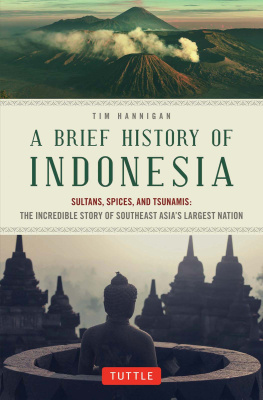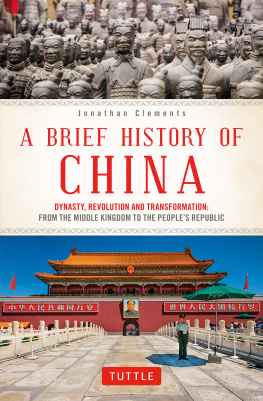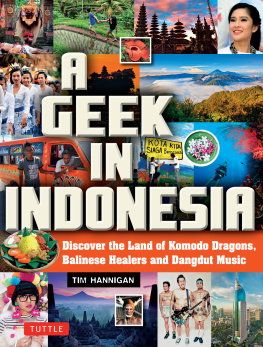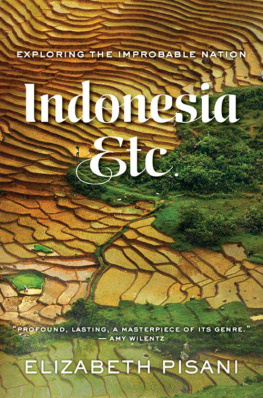Point of Departure:
The Archipelago
S omewhere in the middle of New Guinea, between the Muyu and the Ok Tedi rivers, there is a line in the forest. This is wild country, thick with greenery. To the north, where the rivers rise, are the Star Mountains. To the south the land slopes imperceptibly away towards the swamps and deltas on the edge of the Arafura Sea. This is the ancestral territory of the Yonggom people, hunter-gatherers who travel through the forest harvesting sago palms for their starchy flour and trapping the giant, flightless cassowary birds for their meat.
You cannot see the line on the ground amongst the leaf mould or in the high canopy of the trees, and if you were tracing one of the old Yonggom trails through the forest you would have no way of knowing that you had crossed it. But it is there on the map of the world, a scarlet strip running north to south and as straight as an arrow. The line is the 141st meridian east. It is also the eastern border of the Republic of Indonesia.
The distance from this point in the forests of New Guinea to Pulau Rondo, a speck of coral-fringed land off the northernmost tip of Sumatra, is a little over 3, 274 miles (5,270 kilometres). This is about the same as the distance between London and Tehran, or between New York and Lima. Indonesia spans the gap between those far-flung points. It is the worlds largest archipelagic nation and it is made up of more islands than anyone could possibly count: the official toll of individual landfalls within Indonesias borders has ranged over the years from 13,667 to 18,307. The country is home to a quarter of a billion people, making it the fourth most populous nation on earth. It is also the worlds biggest Muslim-majority statethough more than half of the entire population, and most of the Muslims, are crammed on to Java, an island no bigger than England.
Indonesia became an independent nation at the end of World War II. Since then, it has been ruled for two decades by a wild and passionate demagogue, for three decades by a cool autocrat, and since the turn of the twenty-first century by a bevy of democratic leaders. Its population has tripled in size and its economy has come close to basket case status, boomed spectacularly, imploded catastrophically, and then forged forward once more. The country has expanded its territories twice, and contracted once. It has seen riots, ethnic violence, and one unimaginable episode of mass killing, but it has never collapsed entirely.
Before Indonesia came into being the same territory was known as the Dutch East Indies, and men from the Netherlands held sway over much of it for several centuries. Before that, there was no single political entity stretching from Pulau Rondo to the 141st meridian east, but the region was not simply a mass of unconnected islands. There were great trading states in Java and Sumatra, with influence stretching to other shores. Before Islam became the dominant religion, many people in the region worshipped Shiva, and Vishnu, and Buddha, and before that still more of them worshipped their own ancestors. Over the centuries, the various islands have been visited and settled by people from India, China, Portugal and Arabia. All told, it is a very complicated place.

From its eastern anchor in New Guinea, the Archipelago, the mass of islands of which Indonesia is today the greatest part, runs westwards in two arcs. The northern arc is a chaos of twisted fragments. Beyond the northwest extremity of New Guinea itself, the small islands of Maluku are flung at all angles across a stretch of shallow sea. Further west is the tormented form of Sulawesi, and beyond that lies Borneo, a huge blot of an island. By contrast the southern arc is a vision of perfection, an arabesque of islands stretching from Tanimbar in the east, through Nusa Tenggara to Bali, Java and finally mighty Sumatra, rearing across the equator. These twin arcs of the Archipelago were born of fantastic geological violence in the deep past.
Some 200 million years ago the bulk of the worlds landmasses formed two enormous continents. Laurasia lay to the north; to the south was what we know today as Gondwana, a jumbled jigsaw made up of Africa, Australia, South America, Antarctica and India. Between these two supercontinents was a stretch of turbid water known as the Tethys Ocean. At around the time that the dinosaurs were stalking the earth Gondwana started to break apart, and its fragments, carried on the deep convection currents of the earths mantle, began to sail slowly away towards their current locations. One of the largest of these fragments was the Indo-Australian Plate, an enormous raft of rock with Australia at the stern and the Indian subcontinent for a bowsprit. It travelled north at a formidable rate, covering eight inches (twenty centimetres) a year at times, and squeezing the Tethys Ocean into an ever narrower space. Eventually, the Indian section of the plate ground into the Eurasian Plate, the greatest fragment of old Laurasia. The impact formed the Himalayas, lifting limestone sediments from the bed of the Tethys Ocean to the very summit of Mount Everest.
As the Indo-Australian Plate was driving northwards it was also pivoting towards the northeast, and another impact was threatening. It came some 70 million years ago as the Indo-Australian Plate ploughed into the Sunda Plate, an extension jutting from the underbelly of Eurasia, where Thailand, Cambodiaand, indeed, Indonesialie today. This was a thick, spongy plate, deeper but less dense than its counterpart, and the Indo-Australian Plate was forced beneath it, its leading edge driving down into the very mantle of the earth. Fragments from the outer skin of the Indo-Australian Platechunks of sedimentary rock originally laid down below sea levelwere scraped off at the subduction zone and thrown up along the southern edge of the Sunda Plate like flotsam. These fragments would eventually form the islands of Timor, Sabu and Sumba, the high limestone peninsula that hangs at the southern tip of Bali, and the banks of karst that stretch through southern Java. The Sunda Plate itself, meanwhile, had been cracked and torn by the impact, and through these fissures the materials of the Indo-Australian Plate, rendered in the heat below, were reborn, surging up to leave a rash of volcanoes just north of the plate boundary.
The shifting of the plates was an incredibly slow process, of course, unfolding over many millions of years. But the volcanoes born of the impact could sometimes rise with incredible speed, a new cone of black rubble emerging suddenly from the sea to create a substantial new island over the course of just a few decades. And equally, these volcanoes could obliterate themselves and all that surrounded them in a single, cataclysmic moment. Where they didnt blow themselves apart, however, they formed new lands, and in time they created the entire chain of the Archipelagos southern arc. Beyond this arc, meanwhile, a chaos of plate fragments, fault lines and boundaries had formed the less orderly islands of the northern arc.
If you look at a map of the Archipelago today there is a definite sense of movement, a clear contrast to the solid hulks of Australia, Africa or mainland Asia. Individual islands seem to dance before your eyes. It is a far from fanciful impression, for there is still much movement here. The Indo-Australian Plate is still driving beneath the Sunda Plate, and the volcanoes are still fuming along the entire length of the chain. The plate boundary produces endless earthquakes, as do the myriad shorter fractures amongst the islands of the northern arc. There are few more dynamic landscapes anywhere on earth.










